We went to West Virginia in year 2 of the road trip – primarily for Bridge Day – but one area that we missed was Harpers Ferry. I figured out that while staying in Sterling, VA in November 2022 we’d only be an hour from Harpers Ferry National Historical Park, so this would be the perfect time to get back to a place that’s been recommended to us again and again.
My mom and stepdad were in town for the Thanksgiving holiday and they love Harpers Ferry but had only seen a small portion of it, so they came with me to visit so I could get content for you, our lovely readers, and for my students as a virtual field trip for The Traveling Teach. It was a long day, but worth it for the history we learned, the meal we enjoyed and the scenery of the town. Stephen unfortunately wasn’t able to join us as he had to work that day.
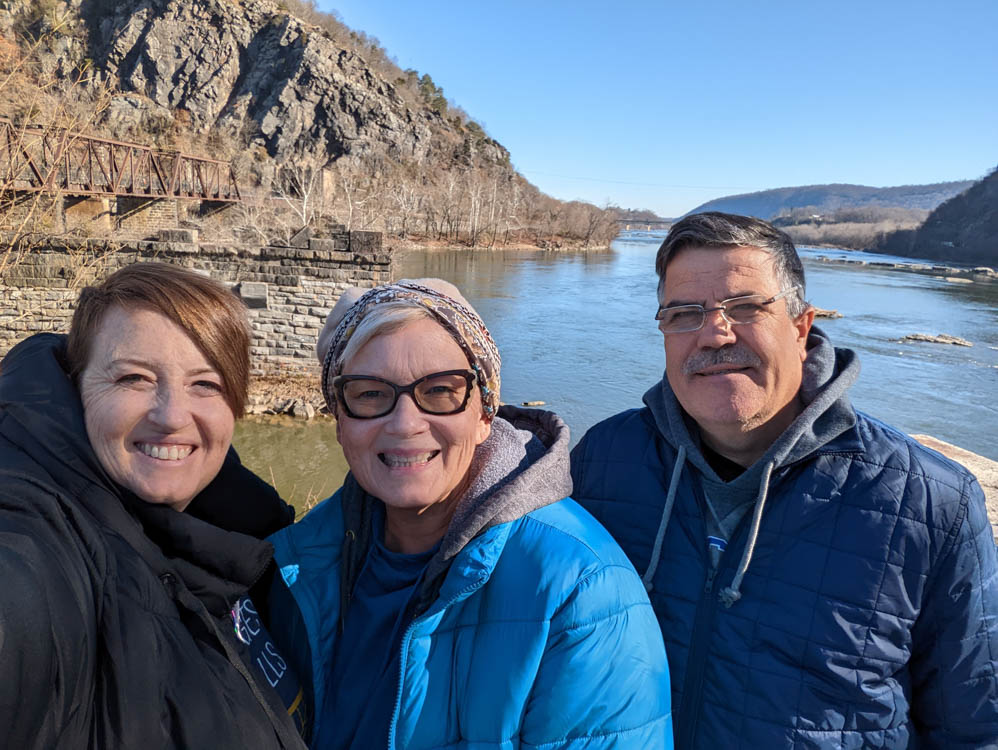
To get to Harpers Ferry you have to enter the National Historical Park and pay the entrance fee – $20 per car at the time of writing, or free if you have the annual pass. You can then drive down into the town (but parking is limited and often full) or take the shuttle bus; we chose the latter.
There are many buildings that you can either view through the front door or enter and learn even more about the town of Harpers Ferry and the history that led to John Brown’s actions and subsequent execution. The best place to start is the bookstore to get your National Parks passport stamp and then go to the visitor’s center where a short film is shown. These films are usually well done and provide context for the location you’re going to see at the National Parks. If they’re 20 minutes or less we often try to watch them – unless we have Truffles and are switching back and forth outside since pups aren’t allowed in most NPS buildings.
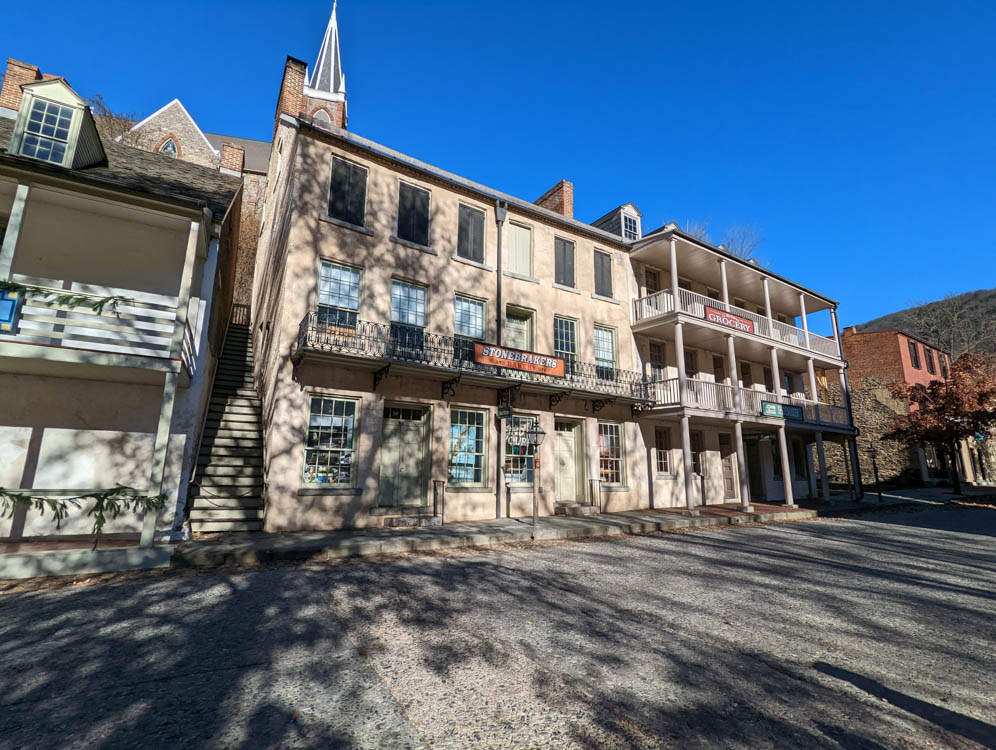
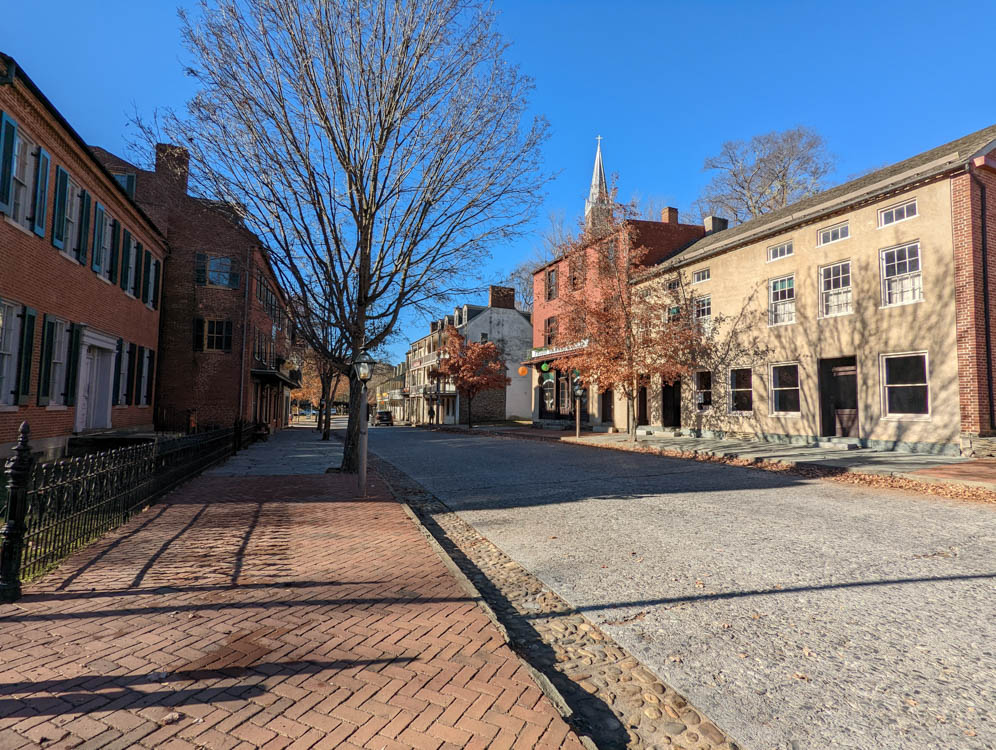
Once the film is complete, make your way down the main street towards the waterfront. You’ll see lots of exhibits and buildings you can go into. You’ll end before the water at the fire station – which is known as John Brown’s fort and is from 1848. It has been erected in several locations both within Harpers Ferry and in Chicago. This is the building that John Brown and his followers barricaded themselves into towards the end of their raid.
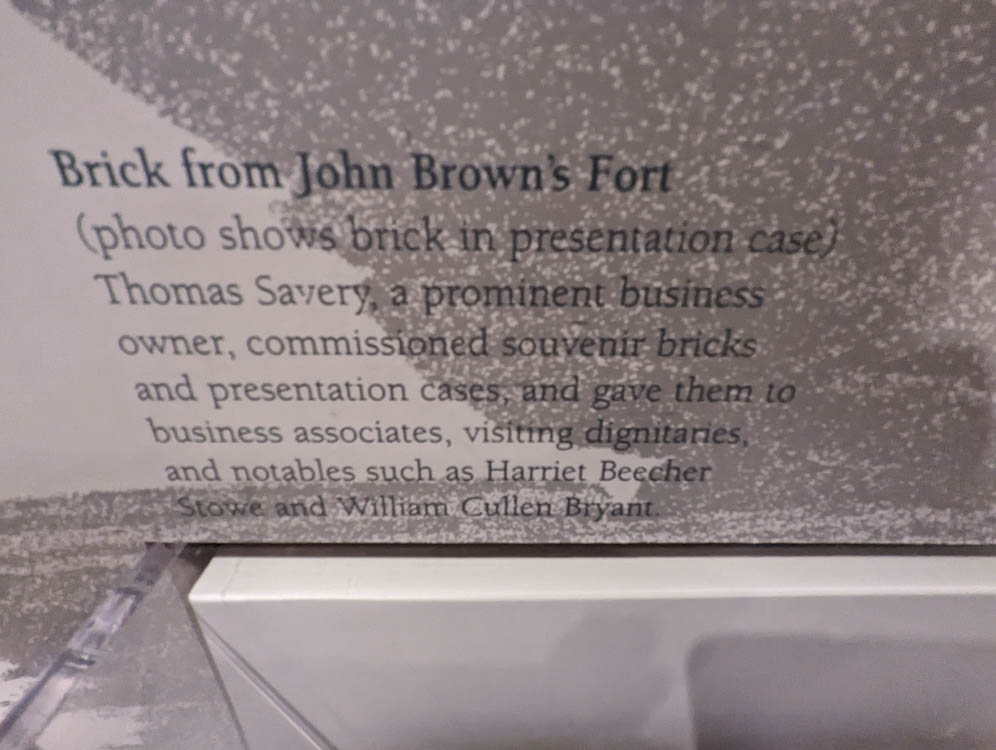

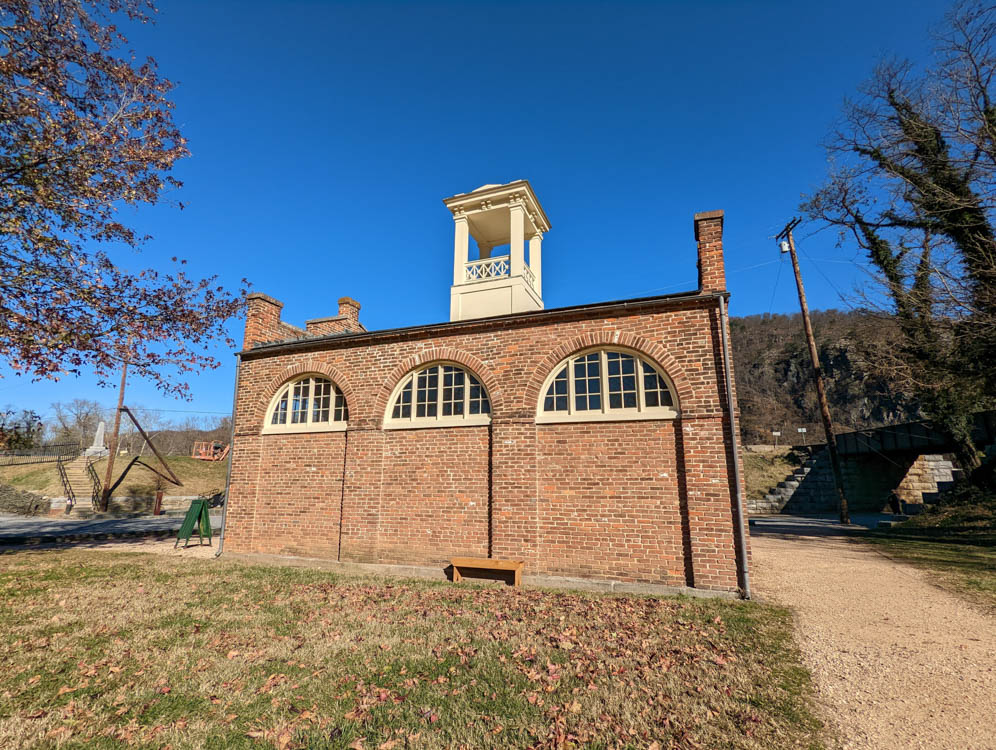
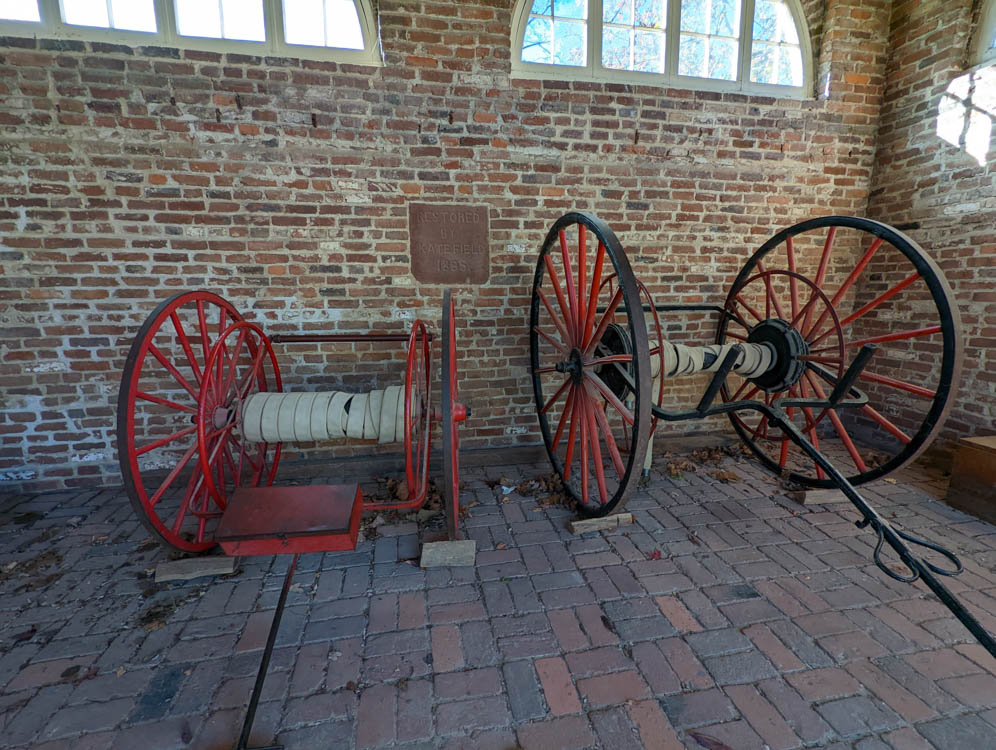
Who is John Brown and why does he matter to the history of Harpers Ferry or the US? John Brown was an abolitionist. He gathered 21 others with him to storm the armory for the United States. This was 1859 so the Civil War had not yet split the country, but the issue of enslavement was already doing that. John Brown wanted to arm enslaved people in the south to rise up against the institution of enslavement.
Over 3 days they fought against the government soldiers and attempted to take over the armory. What they did, led by John Brown, was treason and for that they were executed. The outcomes were that the people of Harpers Ferry felt terrified and began to form militias and arm themselves more heavily.
John Brown’s legacy is complicated in its retelling. Many remember what John Brown attempted in a positive light – moving the country forward towards the end of enslavement. But others saw only that he was attempting to take away their way of life.
There are also a few other exhibits that were focused on black history that were closed. I did make my way into the exhibit about Storer College – an HBCU (Historically Black College or University) that provided an education for Black Americans when it was segregated and a challenge to achieve, especially for those leaving enslavement at the end of the Civil War and during Reconstruction.
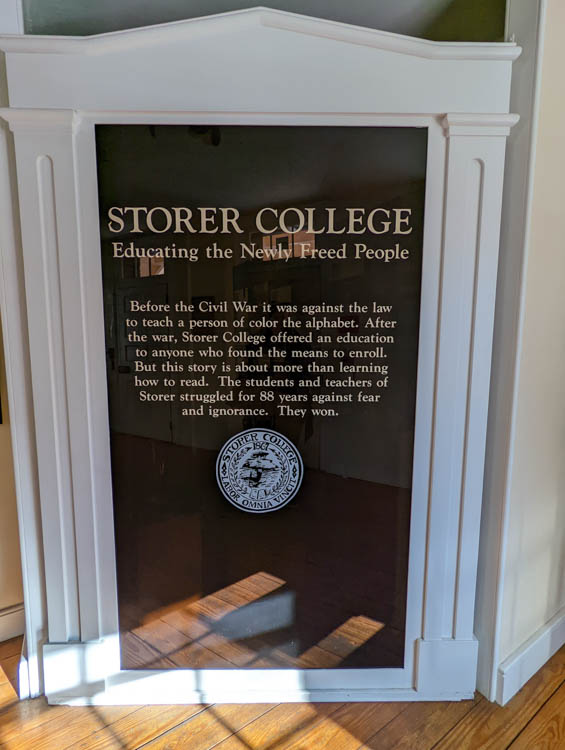
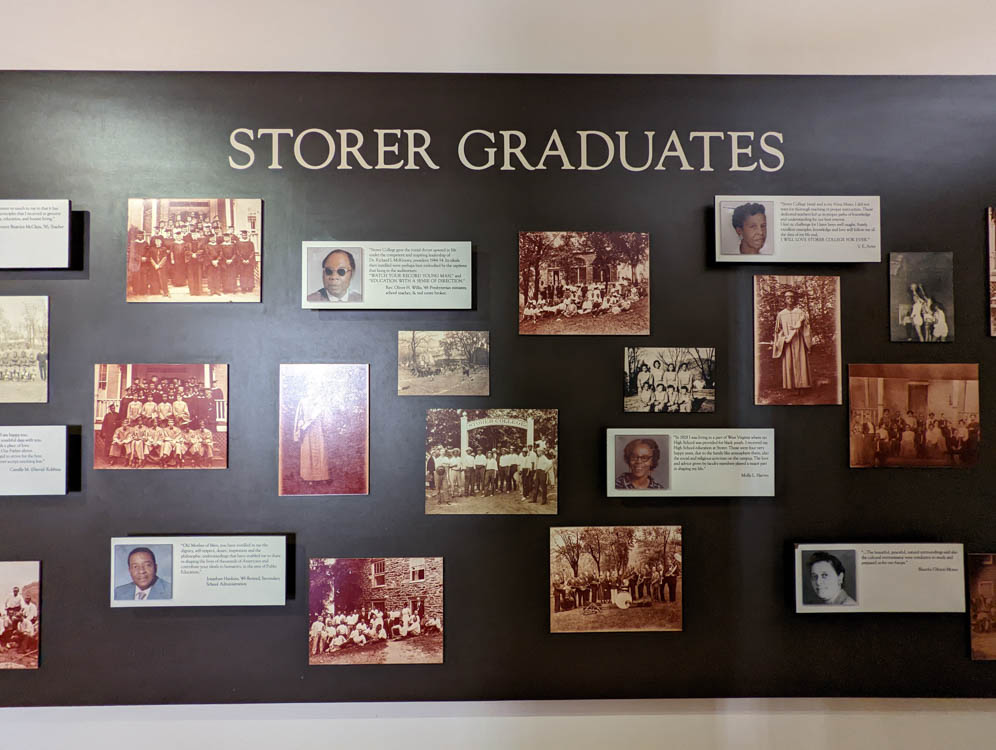
Later we made our way up to the Rabbit Hole for lunch. It was a cute and quirky spot with great food. If you want a great local option, this is your place. We also wandered around looking in the cute shops and small businesses that line the streets of Harpers Ferry.

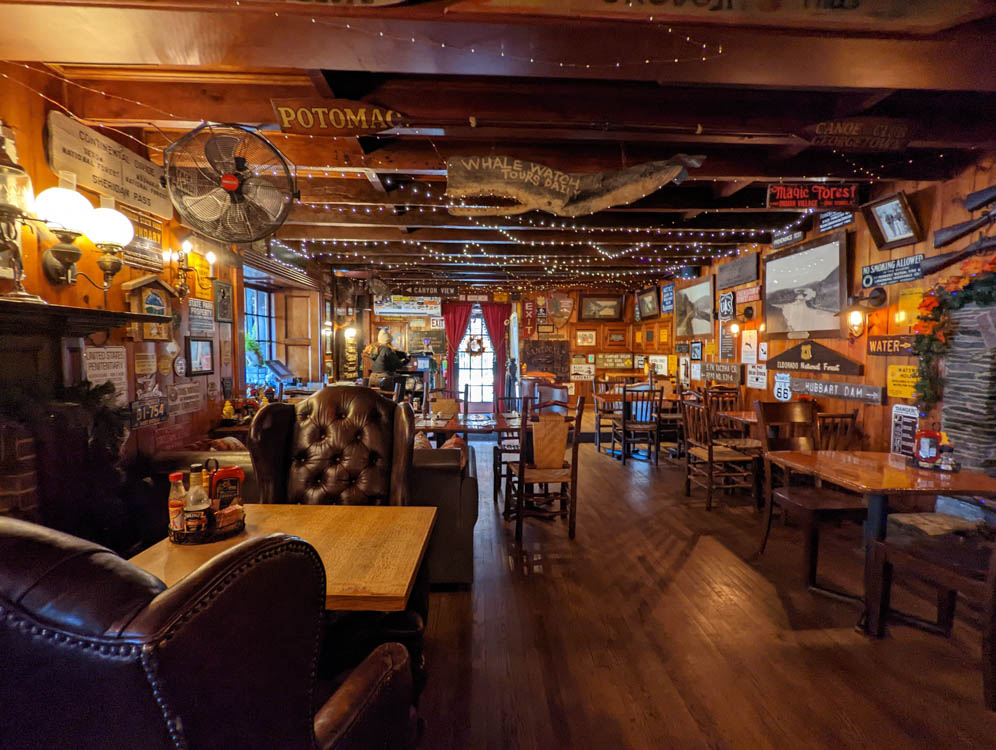
There are other buildings including one housing an exhibit about Lewis and Clark whose expedition brought them through Harpers Ferry in March of 1803.
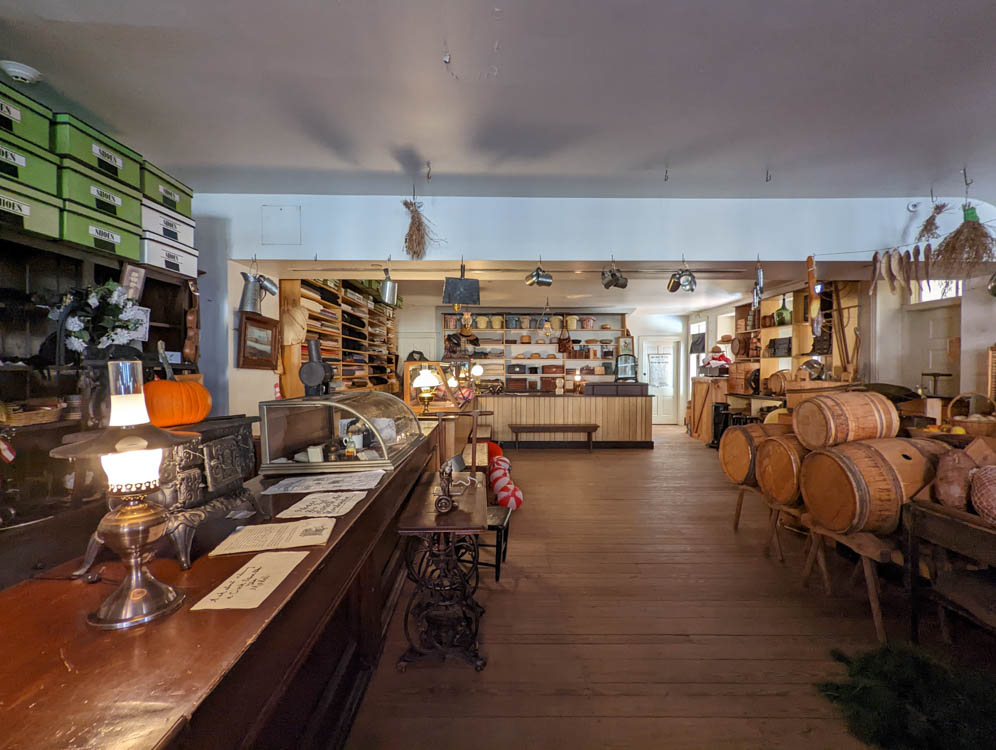
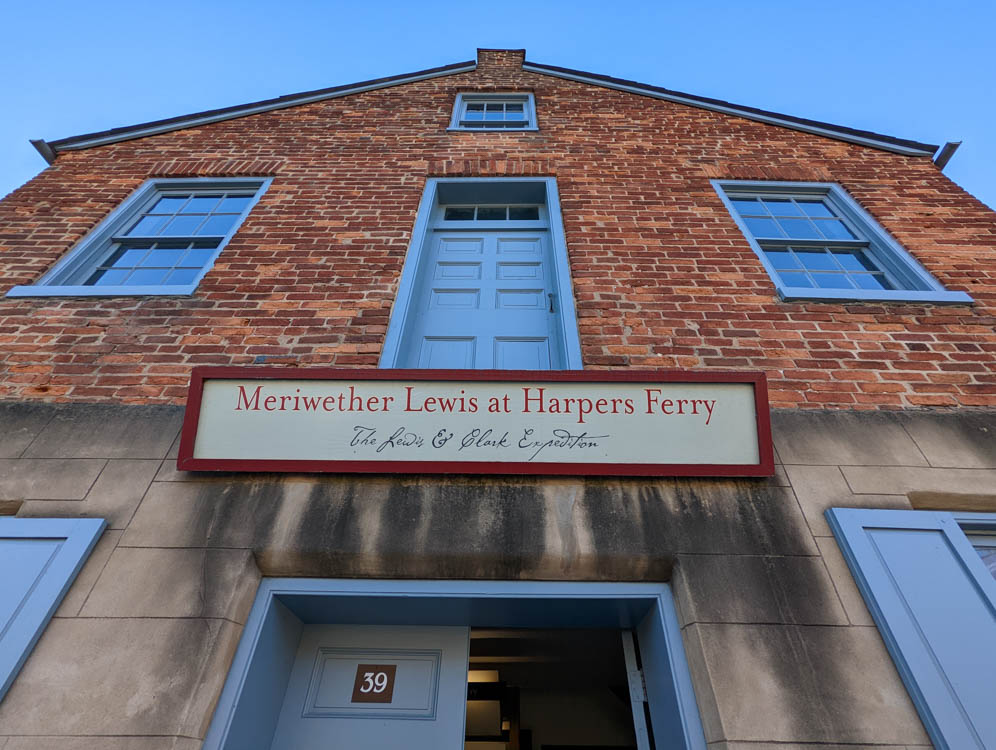

One plaque that jumped out at me was this memorial to Heyward Shepherd, a free black man, who was the first killed in John Brown’s Raid on Harpers Ferry. As I read it, I couldn’t believe what I was seeing as I skimmed it until I saw that this was placed in 1931 by the United Daughters of the Confederacy. As with many (many!) of the Confederate monuments, this was erected during a time when the rights of Black Americans were being subverted and this was a way to continue to remind them of white supremacy. There is an additional plaque that now stands here as well – correcting the lies and false narrative of happy enslaved people that the Confederacy was fighting for.
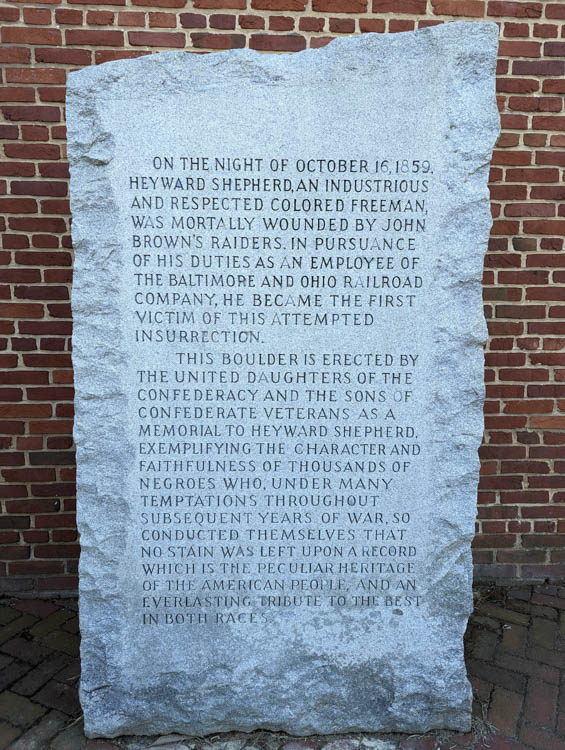
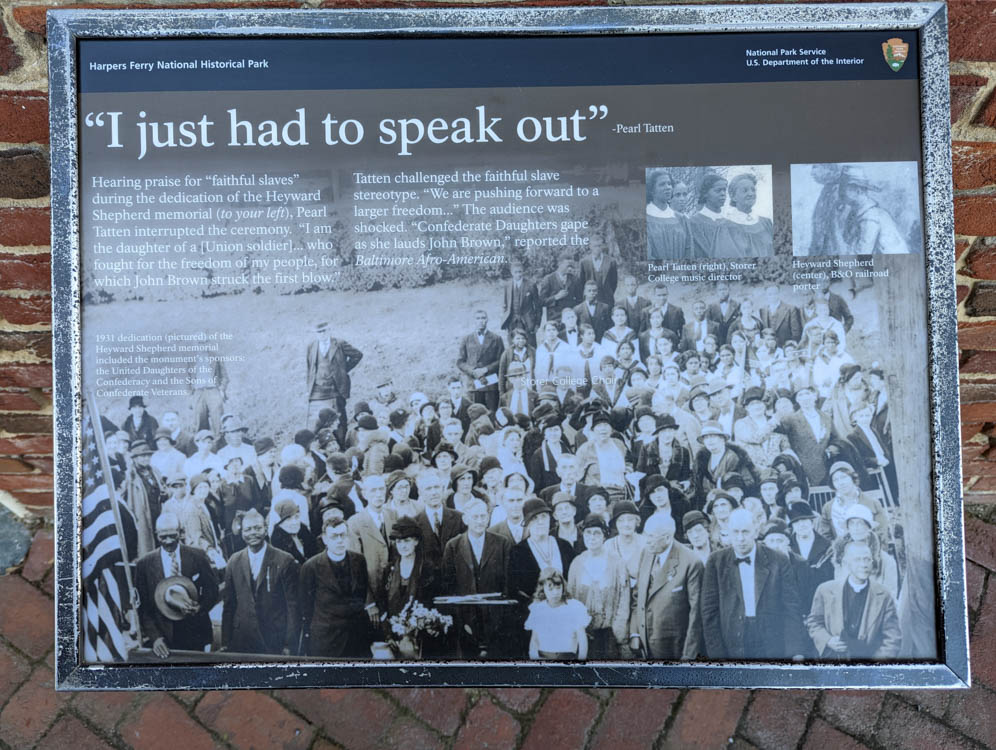
The final spot we stood upon was the site where “John Brown’s Fort” or the engine house, was originally positioned. This is where the final stand took place before the raid, which had been raging for 3 days, came to an end in just 3 minutes.
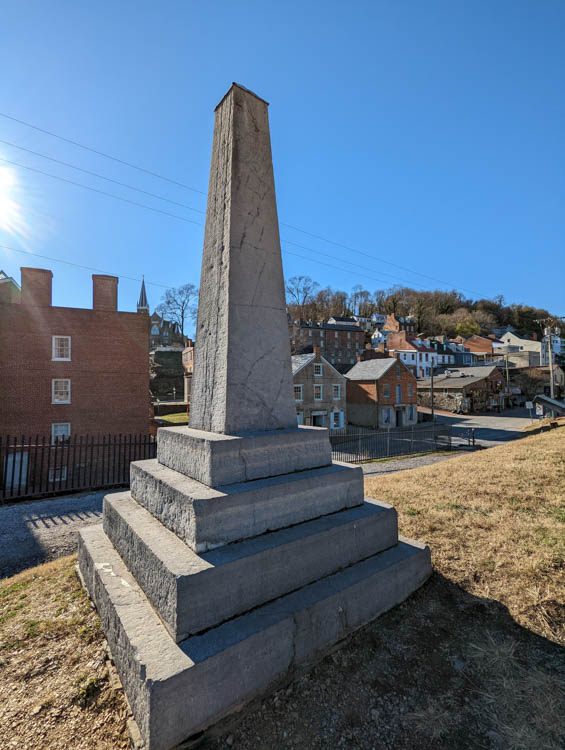
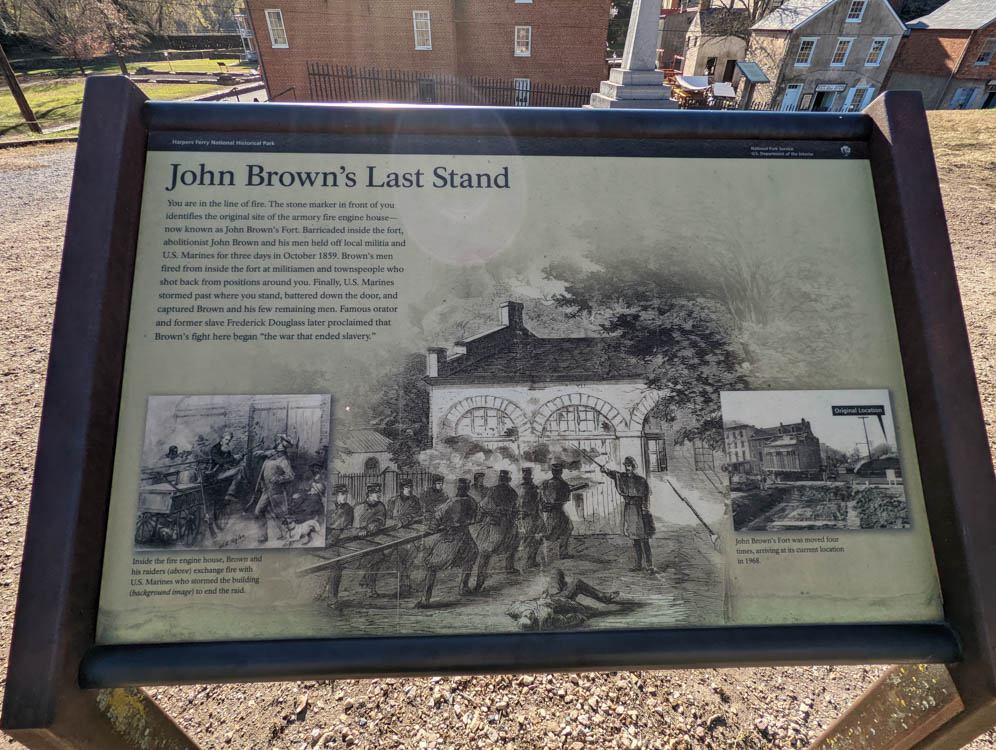
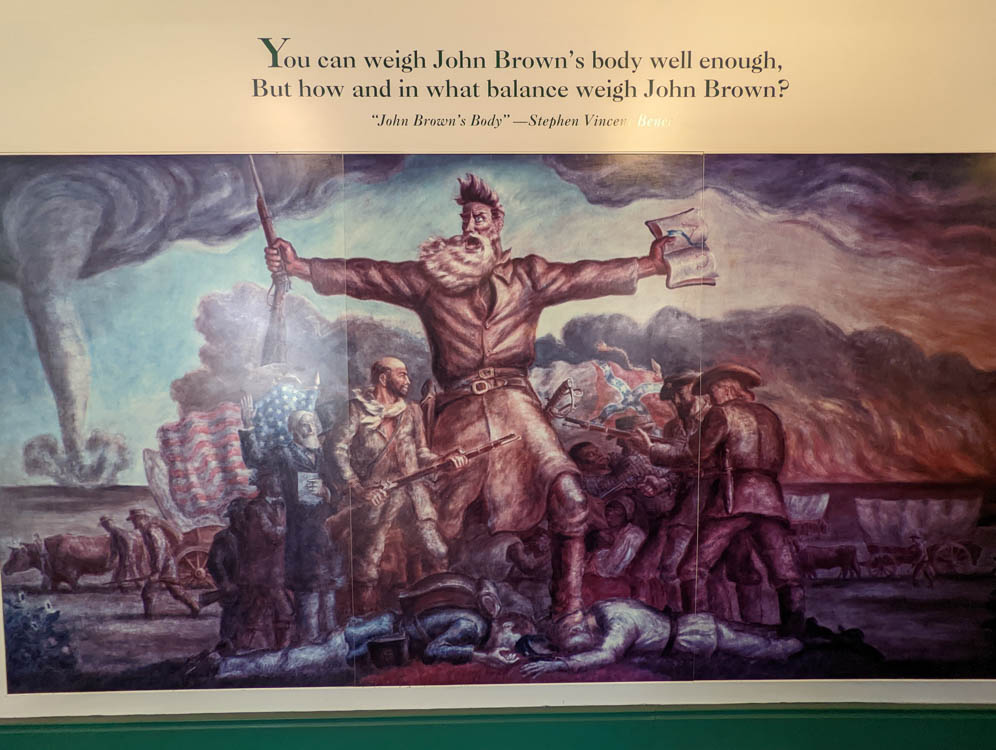
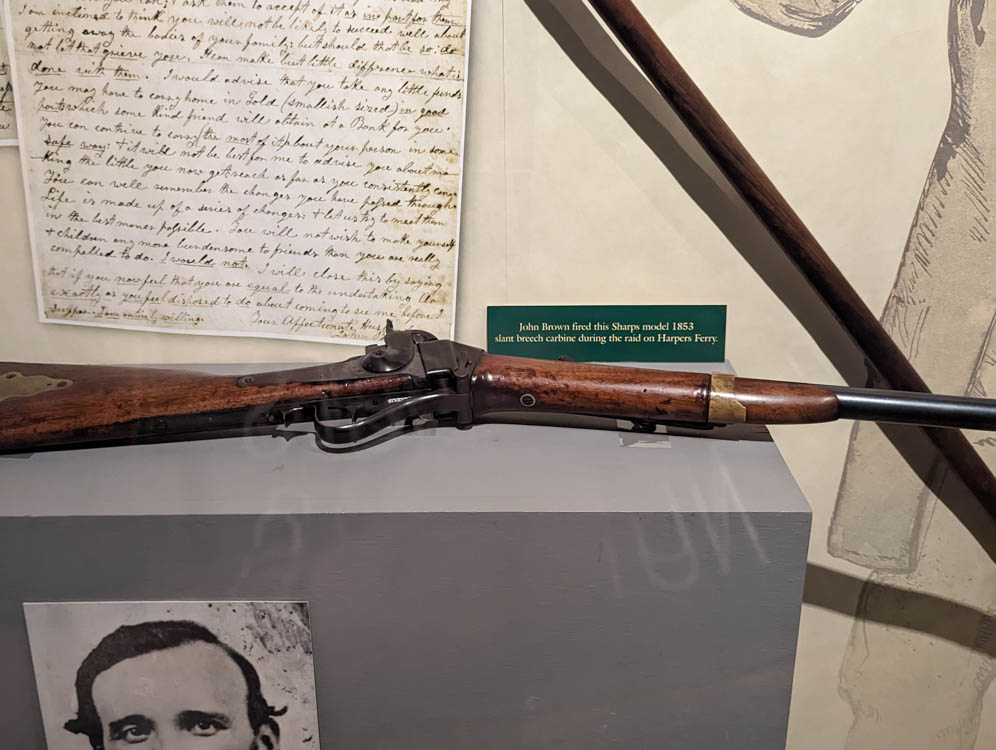
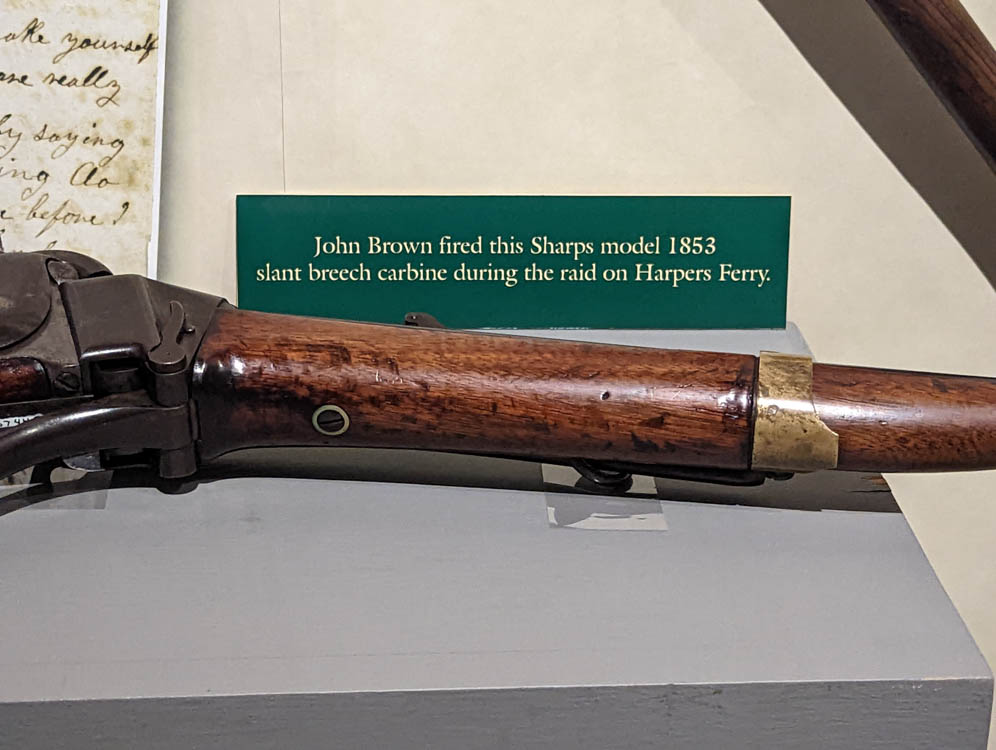
If you enjoy small towns, National Parks or history, Harpers Ferry is a must-do as you cross through West Virginia or the northern edge of Virginia or Maryland.
Leave a Reply